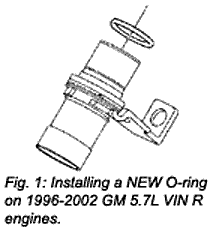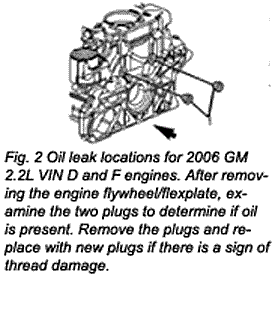Engine Builders: At Quaker State Research, the folks working on the technical hotline answer hundreds of lubricant questions every day. Let’s answer a few more obscure questions you may or may not have heard before.
Question: Can engine oil actually impact my fuel economy?
Answer: Yes, but in the range of a few percent. Believe it or not, the types of engine oils recommended in many of today’s owner’s manuals must pass an industry standard test to show that the oil can provide better fuel economy in a real test engine as compared to a reference engine oil.
Question: Can changing the engine oil and oil filter actually help me pass an emissions test?
Answer: Yes, but it is by no means a cureall. If the engine oil contains excessive amounts of unburned or partially burned fuel, changing the engine oil and oil filter could temporarily lower the HC and CO emissions. But unless the root cause is fixed, the contamination should return.
Question: Can engine oil improve my engine’s compression?
Answer: Yes. The engine oil helps seal the area between the piston rings and cylinder walls. Or to think about it from a different perspective, have you ever compared a dry compression check on an engine versus a wet compression check?
Question: Typically, when the engine oil and oil filter are replaced, about how much used oil remains inside the engine?
Answer: It depends, but I think you would be surprised to learn that certain vehicles could still have more than 10 percent of the used oil remaining in the engine. Remember that there may be oil clinging to surfaces and still stuck in passages; but also remember that many engines use engine oil as a hydraulic fluid for valve lash adjusters, timing chain tensioners, etc. Next time you have a chance, look up a car’s oil capacity in a service manual/program and you may find that manufacturers are now listing the dry capacity in addition to the capacity for an oil and filter change. (Courtesy of Quaker State)
Engine Builders: The AERA Technical Committee offers the following information regarding installation of the front timing cover for 1996-2002 GM 5.7L VIN R engines. GM recommends that you always use a new front cover (p/n 93800970) for these applications.
Before installing the front cover make sure the oil pan is clean of all old sealer from the corners of the oil pan gasket where it meets the engine front cover.
IMPORTANT: Apply the proper amount of adhesive (GM p/n 12346141 or equivalent) 1.0″/25 mm into the area where the engine front cover meets the engine block oil pan surfaces.

Install the NEW engine front cover and bolts. Tighten the engine front cover bolts to 106 in.lbs. (12 Nm). IMPORTANT: DO NOT reuse the original crankshaft position sensor seal (O-ring). When installing the crankshaft position sensor make certain the crankshaft position sensor is fully seated and held stationary in the engine front cover crankshaft position sensor bore. A crankshaft position sensor that is not completely seated will cock in the front cover and may result in erratic engine operation.
Lubricate the NEW crankshaft position sensor seal (O-ring) with clean engine oil.
Install the NEW crankshaft position sensor seal (O-ring) onto the crankshaft position sensor.
Install the crankshaft position sensor and bolt. Tighten the crankshaft position sensor bolt to 80 in.lbs. (9 Nm).
Failure to install a new O-ring on the crankshaft position sensor can also produce an unwanted engine oil leak.
Engine Builders: Some customers have commented on a rear engine oil leak in 2006 GM 2.2L VIN D and F engines, assuming it is a rear main seal leak. The AERA Technical Committee offers the following information regarding this leak.

The information in this bulletin relates to engine oil wicking by the threads of two rear gallery oil plugs. These plugs may have been damaged during the original engine assembly process.
After removing the engine flywheel/flexplate, examine the two plugs shown in Figure 2 (above) to determine if oil is present. Remove the plugs and replace with new plugs (p/n 11588949) if there is a sign of thread damage. This new design plug has pre-applied sealer on it and no additional sealer is required.
| Part Number | Description |
| 12346004 | U.S. GM Vehicles |
| 10953480 | Canadian GM Vehicles |
| 21485278 | Saturn Vehicles |













